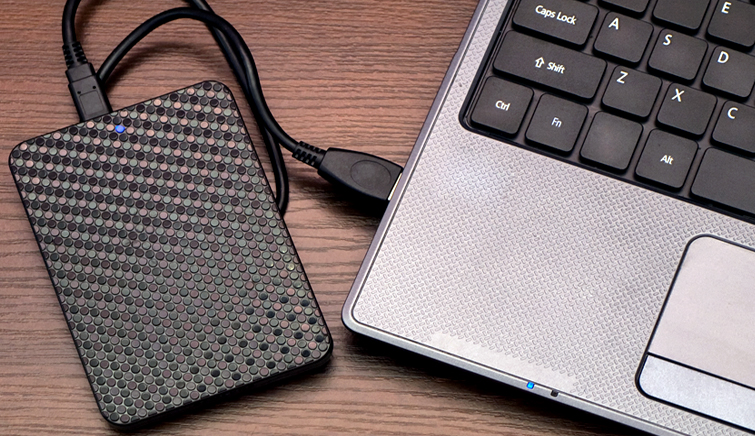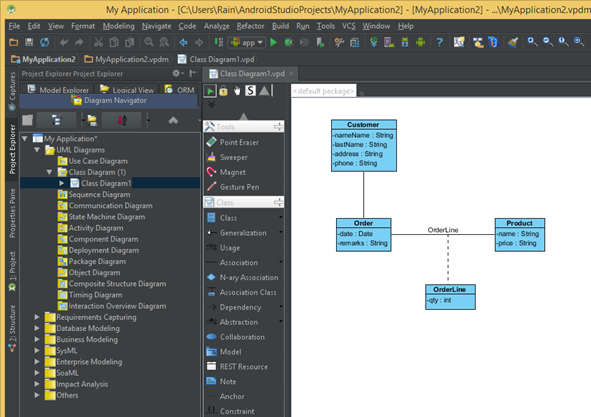» Internet » Mac » Tech Ease: A plugin is a piece of software that acts as an add-on to a web browser and gives the browser additional functionality. Plugins can allow a web browser to display additional content it was not originally designed to display. An example of a plugin is the free Macromedia Flash Player, a plugin that allows the. VST and AudioUnits (AU) are the two native plugin formats for Mac OS X. Although there are other DAW specific formats for plugins, VST and AudioUnits are more common and compatible across various DAWs like Cubase, Logic, etc. There is an abundance of VST and AU plugins for expanding your DAW and building your collection of effects. The.bundle files contains plug-in or are packages for Mac applications that contains various extra features that can be added to the program. These files are used for example for visualization plugins for iTunes or iMovie. Updated: April 27, 2020.
Download mega for mac. See the page for more info.Need more info about this game?

When using the instrument as a plug-in, your MIDI and audio setup, including input devices, sample rate, and buffer size are all set by your host program.
When used as a plug-in, ARIA Player is not a standalone program but rather a virtual instrument player module that is integrated into a hostAudio or notation software that makes use of virtual instrument plug-ins. When the ARIA Player is used as a plug-in, your audio or notation software hosts it. application, such as your sequencerA computer program used for storing and transmitting sequences of musical information. Similar to a player piano that transcribes and plays musical information as holes in paper, MIDI sequencers use electronic data to record and reproduce performances. or notation softwareA computer program used for notating music. Common examples include MakeMusic Finale and Avid Sibelius.. One of the benefits to using the ARIA Player as a plug-in is the ability to open multiple instances of the ARIA Player at the same time, allowing for a total of more than 16 instrument slots. These are some of the various uses as a plug-in:
- MIDI recording and sequencing
- Audio mixing of software instrument tracks within a single program
- Automation of parameters in the host program
- Effect processing of instrument sounds using effects plug-ins
- Saving and recalling of all plug-in settings when the project is reloaded
- Integration with other instruments into a “virtual studio”
The ARIA Player can be used as a VSTVirtual Studio Technology. A plug-in format developed by Steinberg that is supported in many audio programs and music software. Also VSTi to refer specifically to software instruments using the VST format. plug-in in many DAWDigital audio workstation. A DAW is a program that operates as a virtual studio for recording, editing, and playback. DAWs vary widely in their capabilities. Common examples include Steinberg Cubase, Apple Logic Pro, and Avid Pro Tools.s, sequencers, notation programs, and other hosts. The ARIA Player can also be used as an AUAudio Units. A plug-in format developed by Apple designed for OS X. Often used on Mac computers in place of VST plug-ins. plug-in on Mac or as an RTASReal Time AudioSuite. A plug-in format developed by Avid for use in their Pro Tools 10 and earlier software./AAXAvid Audio eXtension. A plug-in format developed by Avid for use in their Pro Tools 11 and later software. plug-in for Pro Tools. To use the ARIA Player as a plug-in instrument, launch your sequencer or notation program and load the ARIA Player from within it. Make sure that your host program is properly installed and configured, and that it is producing sound properly. Used as a plug-in, the ARIA Player’s audio and MIDI settings are managed by the host program. During installation, you choose which plug-in types to install on your computer.
| Plug-in Standard | Description | Windows | Mac |
| VST | The VST plug-in stands for Virtual Studio Technology and was developed by Steinberg, the makers of Cubase, Nuendo, and other audio programs. VST plug-ins are common to many audio programs. | X | X |
| Audio Units | The Audio Units (AU) plug-in standard was developed by Apple Inc. for Core Audio under Mac OS X and is used by Apple GarageBand, Apple Logic, and other Mac compatible audio programs. | Mac only | X |
| RTAS/AAX | RTAS plug-ins are designed to work with Avid Pro Tools 10 and several earlier versions. AAX plug-ins are designed to work Avid Pro Tools 11 and later. | X | X |
The ARIA Player is designed for any audio or music software that supports virtual instrument plug-ins. Each program has its own approach to installing, loading, and accessing plug-ins, so it is important to refer to the instructions in the host program’s user manual regarding plug-in support and handling. If you choose to include the VST plug-in during the ARIA Player installation, you are prompted to specify the location where you want to place it. The typical default location is C:Program Filesvstplugins or C:vstplugins. In this folder, there are two versions of the ARIA Player: ARIA Player VST_x86.dll, which contains a single stereo output, and ARIA Player Multi VST_x86.dll, which allows you to assign up to 16 stereo outputs. You may also see 64-bit versions of the plug-in here, ending in x64 rather than x86. You may need to direct your host application to this folder. Alternatively, you can copy the ARIA Player VST file to your host program's own VST folder. Please refer to your host program's user guide and the Garritan Knowledge Base for more information.
Some 64-bit hosts have one common VST folder for both 64-bit and 32-bit plug-ins; only use the version of the plug-in that is native to your host.
You can always find a copy of the ARIA Player VST in the C:Program FilesGarritanARIA PlayerVST folder also. However, we do not recommend using this folder as the main location for VST plug-ins on your computer, since uninstalling the ARIA Player removes this directory.
Set up plug-ins on Windows
Before you set up your plug-ins with your host program, ensure that you've installed them.
 Some highlights are mentioned below, for the full feature list check out the.Performance.
Some highlights are mentioned below, for the full feature list check out the.Performance.
The VST plug-in files for the ARIA Player are named ARIA Player VST_x64.dll and ARIA Player VST_x86.dll for the 64-bit and 32-bit versions respectively.
The steps for configuring VST plug-ins with a host program are entirely dependent upon the host. Please consult your host program's documentation for specific instructions.
Typically, that set up process usually involves one of the following procedures:
- Copy the ARIA Player VST_x64.dll or the ARIA Player VST_x86.dll file to the folder that your host program scans for VST plug-ins.
If your host is a 32-bit program, copy the ARIA Player VST_x86.dll file to the host's plug-in folder. If it's 64-bit, copy the ARIA Player VST x64.dll file to the host's plug-in folder.
- Or, in the host program, specify the folder(s) that it should look in to find your VST plug-ins.
If you don't remember where you initially installed the VST plug-in files, you can find an extra copy in C:Program FilesGarritanARIA PlayerVST.
After completing either procedure, you may need to direct your host program to rescan your plug-ins folders.
If chosen upon installation, RTAS or AAX plug-ins are automatically installed into the correct location for your Pro Tools software.
Set up plug-ins on Mac
When you install the ARIA Player on Mac, all of the available plug-ins that you chose to install are automatically installed to the correct locations. On Mac, host programs use the same folders for VST or Audio Units plug-ins.
After installation, you may need to direct your host program to rescan your plug-ins folders. Please consult your host program's documentation for specific instructions.
Using the ARIA Player with a notation program
For more information about using the ARIA Player with notation programs, please refer to the instructions in your notation program’s user manual regarding the loading and operation of virtual instrument plug-ins. Some notation programs may not support virtual instrument plug-ins.
There are two ways to use ARIA Player with notation programs. One is to use it as a virtual instrument plug-in, as described above. The other is to use the ARIA Player standalone and route MIDI output from the notation application to the player. This is a more complex setup suggested only for advanced users.
VST Expression support
Some of the sample libraries available for ARIA support VST Expression, a new system that dramatically simplifies handling of articulations and expressions when using the sample libraryA piece of software consisting of a collection of recorded instrument sounds. Sample libraries can be used to play back existing MIDI sequences or to act as a live virtual instrument. within Steinberg Cubase. The new technology makes recording and editing articulation commands much easier, with all articulation data displayed separately in both track inspector and editor windows. More information about VST Expression can be found at the Steinberg website.

Leave feedback on this topic
ARIA Player User Manual
Copyright and trademarks

7007 Winchester Circle, Suite 140
Boulder, CO 80301
Leave feedback on this topic
ARIA Player User Manual
What Is Sharepoint Browser Plug In For Mac
7007 Winchester Circle, Suite 140
Boulder, CO 80301
| Look up plug-in or add-on in Wiktionary, the free dictionary. |
In computing, a plug-in (or plugin, add-in, addin, add-on, or addon) is a software component that adds a specific feature to an existing computer program. When a program supports plug-ins, it enables customization.
A theme or skin is a preset package containing additional or changed graphical appearance details, achieved by the use of a graphical user interface (GUI) that can be applied to specific software and websites to suit the purpose, topic, or tastes of different users to customize the look and feel of a piece of computer software or an operating system front-end GUI (and window managers).
Apple Mac Plug
Purpose and examples[edit]
Applications support plug-ins for many reasons. Some of the main reasons include:
- to enable third-party developers to create abilities which extend an application
- to support easily adding new features
- to reduce the size of an application
- to separate source code from an application because of incompatible software licenses.
Types of applications and why they use plug-ins:
Moreover, you will be able to unblock any website and bypass firewalls easily with the solo VPN. It will nicely let you hide your personal identity and the IP address from outsiders and internet service providers. The good thing is that you don’t need to go through a lengthy process if you download and use Hola Free VPN.
- Digital audio workstations and audio editing software use audio plug-ins to generate, process or analyze sound. Ardour, Audacity, Logic Pro X and Pro Tools are examples of such systems.
- Email clients use plug-ins to decrypt and encrypt email. Pretty Good Privacy is an example of such plug-ins.
- Video game console emulators often use plug-ins to modularize the separate subsystems of the devices they seek to emulate.[1][2][3][4][5][6][7][8][9] For example, the PCSX2 emulator makes use of video, audio, optical, etc. plug-ins for those respective components of the PlayStation 2.
- Graphics software use plug-ins to support file formats and process images. (c.f.Photoshop plugin)
- Media players use plug-ins to support file formats and apply filters. foobar2000, GStreamer, Quintessential, VST, Winamp, XMMS are examples of such media players.
- Packet sniffers use plug-ins to decode packet formats. OmniPeek is an example of such packet sniffers.
- Remote sensing applications use plug-ins to process data from different sensor types; e.g., Opticks.
- Text editors and Integrated development environments use plug-ins to support programming languages or enhance development process e.g., Visual Studio, RAD Studio, Eclipse, IntelliJ IDEA, jEdit and MonoDevelop support plug-ins. Visual Studio itself can be plugged into other applications via Visual Studio Tools for Office and Visual Studio Tools for Applications.
- Web browsers have historically used executables as plug-ins, though they are now mostly deprecated. Examples include Adobe Flash Player, Java SE, QuickTime, Microsoft Silverlight and Unity. (Contrast this with browser extensions, which are a separate type of installable module still widely in use.)
Mechanism[edit]
What Is Blocked Plug In On Mac
The host application provides services which the plug-in can use, including a way for plug-ins to register themselves with the host application and a protocol for the exchange of data with plug-ins. Plug-ins depend on the services provided by the host application and do not usually work by themselves. Conversely, the host application operates independently of the plug-ins, making it possible for end-users to add and update plug-ins dynamically without needing to make changes to the host application.[10][11]
Programmers typically implement plug-in functionality using shared libraries, which get dynamically loaded at run time, installed in a place prescribed by the host application. HyperCard supported a similar facility, but more commonly included the plug-in code in the HyperCard documents (called stacks) themselves. Thus the HyperCard stack became a self-contained application in its own right, distributable as a single entity that end-users could run without the need for additional installation-steps. Programs may also implement plugins by loading a directory of simple script files written in a scripting language like Python or Lua.
Mozilla definition[edit]
In Mozilla Foundation definitions, the words 'add-on', 'extension' and 'plug-in' are not synonyms. 'Add-on' can refer to anything that extends the functions of a Mozilla application. Extensions comprise a subtype, albeit the most common and the most powerful one. Mozilla applications come with integrated add-on managers that, similar to package managers, install, update and manage extensions. The term, 'plug-in', however, strictly refers to NPAPI-based web content renderers. Mozilla deprecated plug-ins for its products.[12] But UXP-based applications, like web browsers Pale Moon and Basilisk, keep supporting (NPAPI) plugins.[13][14][15]
History[edit]
Plug-ins appeared as early as the mid 1970s, when the EDTtext editor running on the UnisysVS/9operating system using the UNIVAC Series 90mainframe computers provided the ability to run a program from the editor and to allow such a program to access the editor buffer, thus allowing an external program to access an edit session in memory.[16] The plug-in program could make calls to the editor to have it perform text-editing services upon the buffer that the editor shared with the plug-in. The Waterloo Fortran compiler used this feature to allow interactive compilation of Fortran programs edited by EDT.
What Is Silverlight Plug In For Mac


Very early PC software applications to incorporate plug-in functionality included HyperCard and QuarkXPress on the Macintosh, both released in 1987. In 1988, Silicon Beach Software included plug-in functionality in Digital Darkroom and SuperPaint, and Ed Bomke coined the term plug-in.[citation needed]
See also[edit]
References[edit]
What Is Blocked Plug In On Macbook
- ^'PCSX2 - The Playstation 2 emulator - Plugins'. pcsx2.net. Retrieved 2018-06-10.
- ^Bernert, Pete. 'Pete's PSX GPU plugins'. www.pbernert.com. Retrieved 2018-06-10.
- ^Team, Demul. 'DEMUL - Sega Dreamcast Emulator for Windows'. demul.emulation64.com. Retrieved 2018-06-10.
- ^'Android Emulator Plugin - Jenkins - Jenkins Wiki'. wiki.jenkins.io. Retrieved 2018-06-10.
- ^'KDE/dolphin-plugins'. GitHub. Retrieved 2018-06-10.
- ^'OpenEmu/SNES9x-Core'. GitHub. Retrieved 2018-06-10.
- ^'Recommended N64 Plugins'. Emulation General Wiki. Retrieved 2018-06-10.
- ^'Playstation plugins & utilities!'. www.emulator-zone.com. Retrieved 2018-06-10.
- ^'PS3 Homebrew Apps / Plugins / Emulators | PSX-Place'. www.psx-place.com. Retrieved 2018-06-10.
- ^Mozilla Firefox plugins – Description of the difference between Mozilla Firefox plugins and extensions under the general term add-on.
- ^Wordpress Plug-in API – Description of the Wordpress Plug-in architecture.
- ^Paul, Ian. 'Firefox will stop supporting plugins by end of 2016, following Chrome's lead'. PCWorld. IDG. Retrieved 20 October 2016.
- ^'Pale Moon: Technical Details - Features'. Pale Moon. Retrieved 2020-06-06.
- ^'Basilisk: Features'. Basilisk. Retrieved 2020-06-06.
- ^'Re: Remember: Plugins are outdated'. Pale Moon Forums. Retrieved 2020-06-06.
- ^EDT Text Editor Reference Manual, Cinnaminson, New Jersey: Unisys Corporation, 1975
Reusable Silicone Ear Plugs
